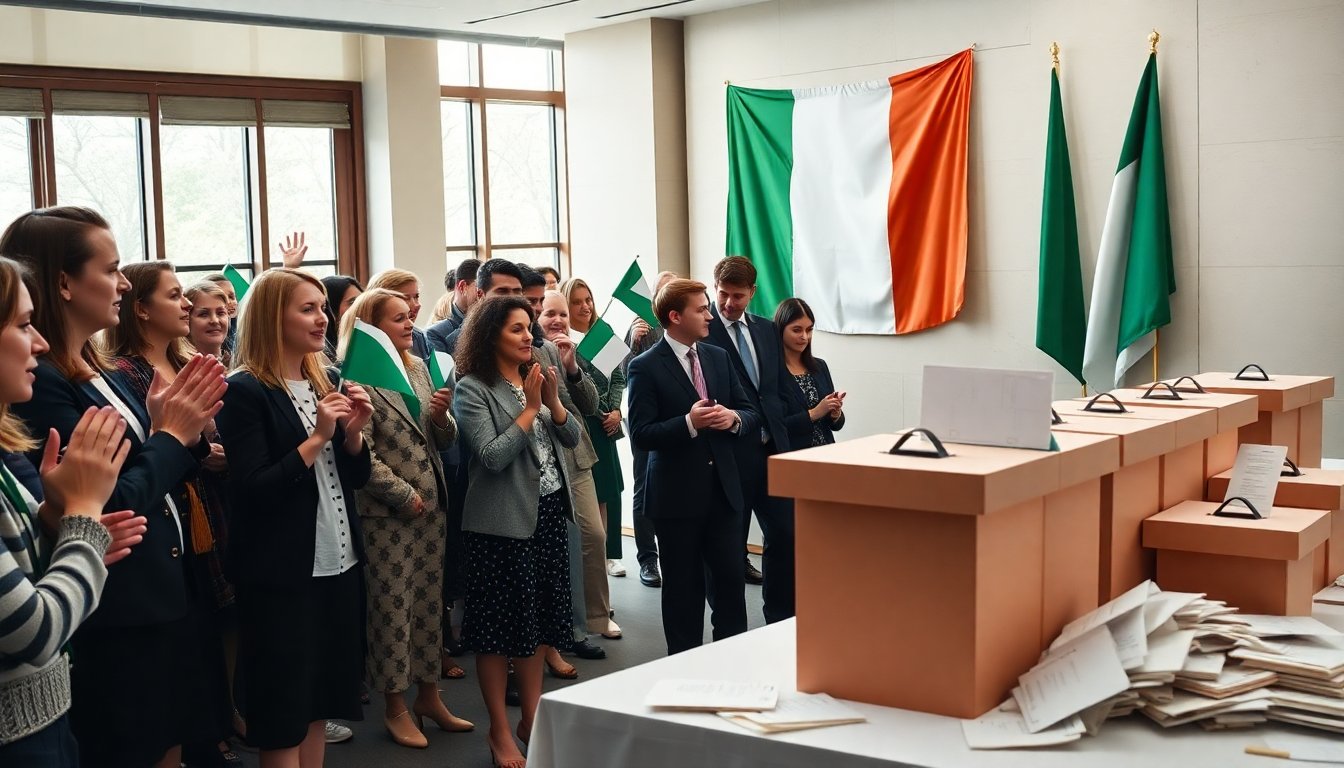Table of Contents
The political landscape in Ireland has shifted significantly following the election of Catherine Connolly, a key figure on the left, as president. Connolly’s victory comes after her opponent, Heather Humphreys, conceded defeat in the wake of a tense ballot counting process.
While Connolly’s election is celebrated by many, it also brings to light serious concerns, including a troubling number of spoiled votes and a notable lack of voter participation.
With a background as a lawyer and an advocate for various social issues, Connolly is expected to assume a primarily ceremonial role as president.
However, her election could alter the traditional balance of power between the presidency and the Irish government.
Election results and implications
Initial reports indicate that Connolly secured approximately 64% of the votes, reflecting a decisive win. Nonetheless, the election was overshadowed by a low voter turnout of around 40% and an alarming 13% rate of spoiled ballots.
Many observers interpret these figures as indicative of widespread dissatisfaction with the political options available to Irish voters.
Voter engagement issues
The high number of spoiled ballots highlights a troubling trend in voter engagement in Ireland. Many citizens voiced frustration over the lack of appealing candidates, particularly from right-wing parties.
Connolly herself acknowledged this sentiment, thanking all voters and recognizing the concerns of those who did not support her. Understanding the electorate’s frustrations will be crucial as she prepares to take office.
Deputy Prime Minister Simon Harris congratulated Connolly and emphasized the importance of unity and success for all Irish citizens.
He expressed that her presidency would represent a collective success for the nation, a sentiment increasingly vital in times of political discontent.
Connolly’s vision and background
Catherine Connolly, aged 68, brings a rich history of public service to her new role.
An experienced politician, she previously served as a councilor and mayor in Galway, gaining respect for her commitment to equality and social justice. Her rise is viewed as a response to the current government’s center-right policies, which many voters feel do not sufficiently represent their interests.
Addressing national issues
Connolly is recognized for her strong positions on key national issues, including immigration and crime. She has been critical of both the United States and the European Union, particularly regarding policies that affect Irish neutrality. This perspective resonates with voters who seek a president mindful of Ireland’s sovereignty and independence.
As her presidency unfolds, Connolly is expected to promote a more progressive agenda, focusing on equality and the safeguarding of Irish neutrality in global affairs. Her challenge will be to navigate her largely symbolic role while responding to the pressing concerns of the Irish public.
Looking ahead
As Connolly prepares for her inauguration at Dublin Castle, the political climate is charged with anticipation and uncertainty. The high number of spoiled votes serves as a reminder of the urgent need for political reform and increased engagement with the electorate. Connolly’s presidency may mark a pivotal moment, challenging the status quo and offering an opportunity for renewed dialogue about the future of Ireland.
While Connolly’s election represents a significant milestone, it also highlights considerable challenges within the Irish political system. The path forward will require not only strong leadership but also a commitment to addressing the underlying issues that have fostered voter apathy and dissatisfaction.





